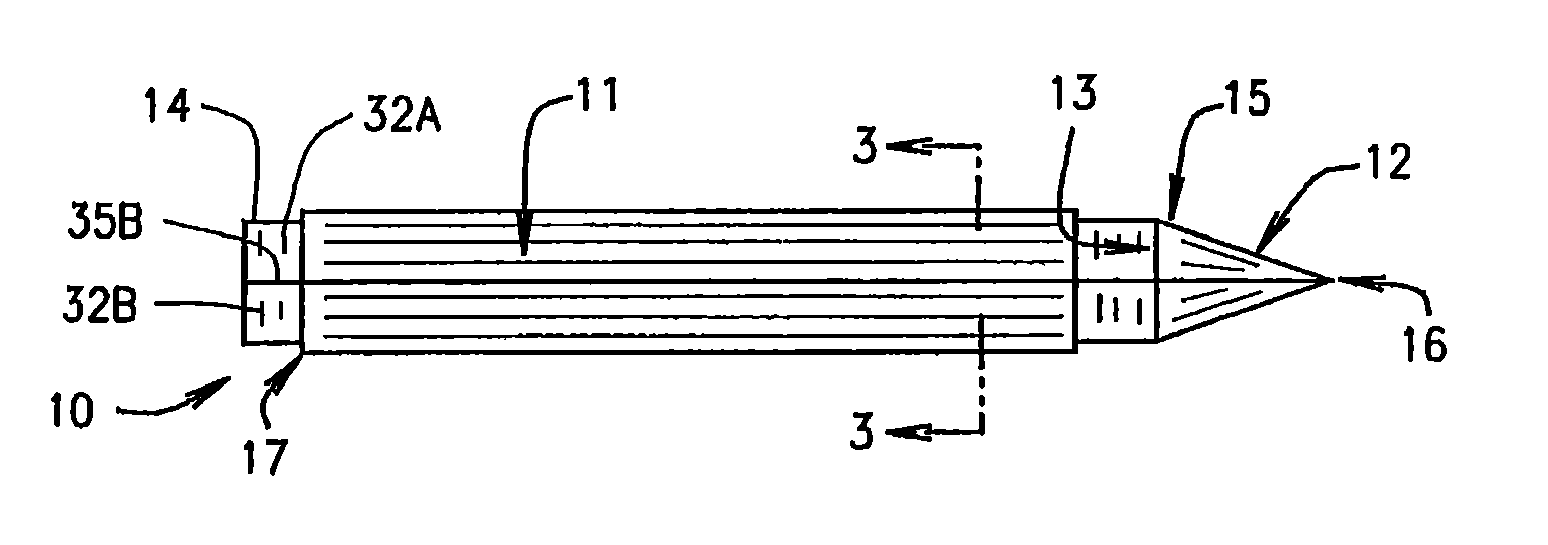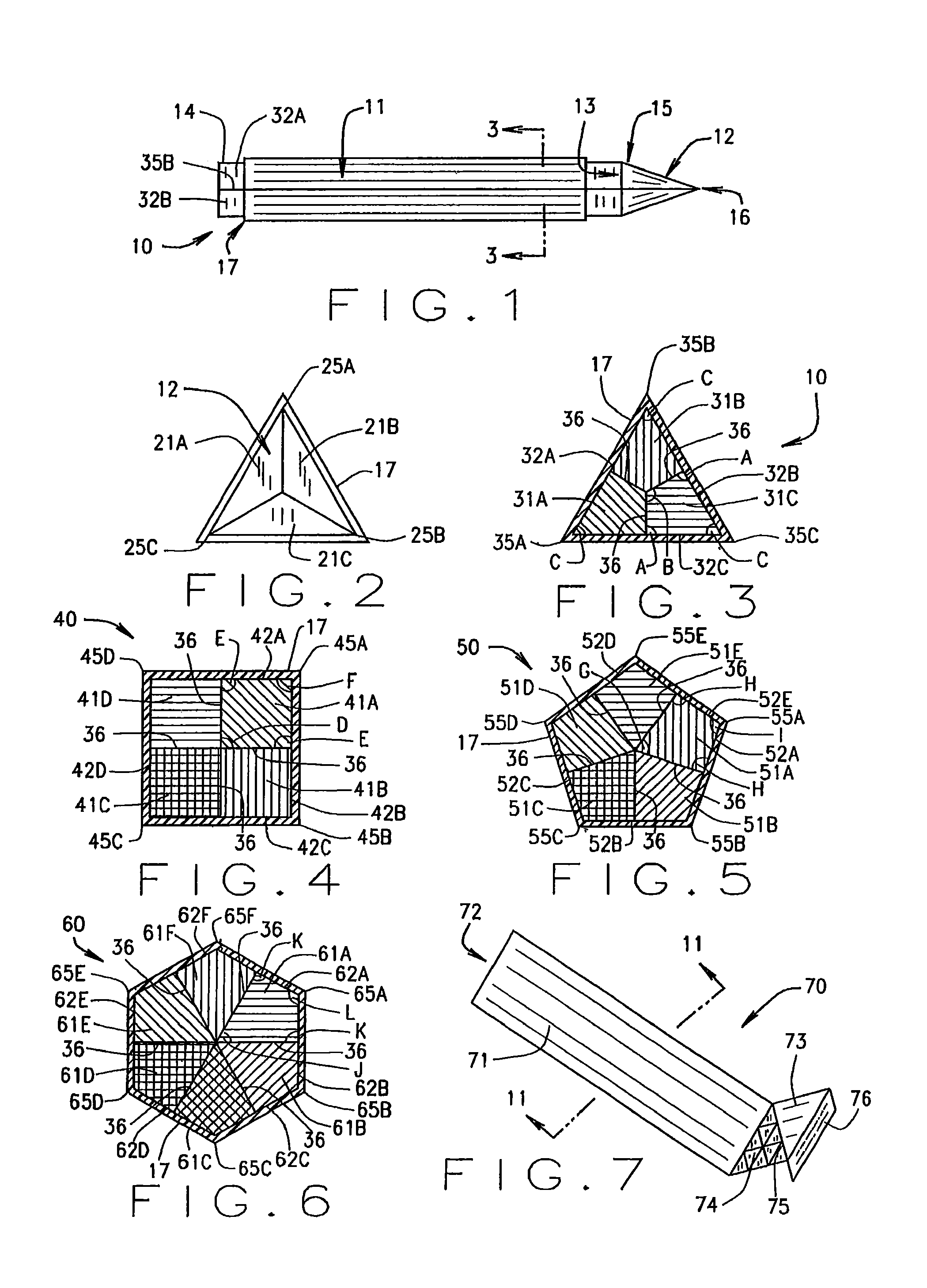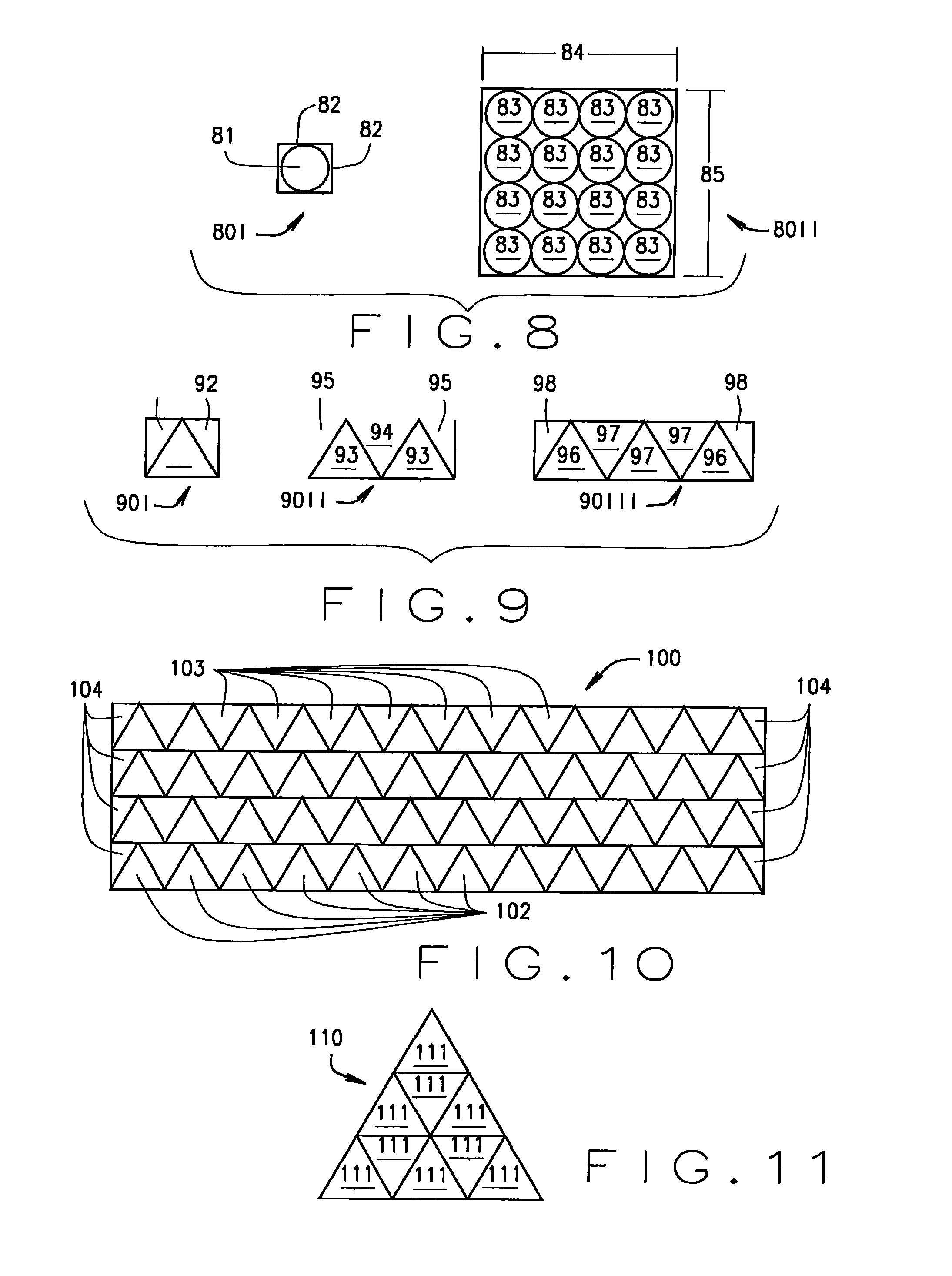Multi-colored crayons with associated packaging
a multi-color crayon and packaging technology, applied in the field of crayons, can solve the problems of difficult to press the correct part of the small curved surface of the round crayon at the correct angle to the surface, and the difficulty of identifying the correct part of the small curved surface of the round crayon, etc., to achieve the effect of convenient and advantageous use and readily indexing for us
- Summary
- Abstract
- Description
- Claims
- Application Information
AI Technical Summary
Benefits of technology
Problems solved by technology
Method used
Image
Examples
Embodiment Construction
[0023]According to the embodiment(s) of the present structures, various views are illustrated in FIGS. 1-11 and like reference numerals are used throughout to refer to like or similar parts or construction for the various views and Figures.
[0024]One embodiment of the present invention comprises multicolored elongate crayons 10 with transverse cross-sectional shapes having at least three generally planar sides wherein the color zones 31 (FIG. 3), 41 (FIG. 4), 51 (FIG. 5), and 61 (FIG. 6) meet at interfaces 36 positioned at approximately 90° angles to each of the external surfaces 32(A-C) (FIG. 3), 42(A-D) (FIG. 4), 52(A-E) (FIG. 5), and 62(A-F) (FIG. 6) of the transverse cross-section as opposed to at the vertices 35(A-C) (FIG. 3), 45(A-D) (FIG. 4), 55(A-E) (FIG. 5), and 65(A-F) (FIG. 6) of the transverse cross-section. Similarly shaped packaging 70 for crayons 10 can be provided which are shown in FIGS. 7 and 11 as having transverse cross-sections of equilateral triangles.
[0025]The ...
PUM
 Login to View More
Login to View More Abstract
Description
Claims
Application Information
 Login to View More
Login to View More - R&D
- Intellectual Property
- Life Sciences
- Materials
- Tech Scout
- Unparalleled Data Quality
- Higher Quality Content
- 60% Fewer Hallucinations
Browse by: Latest US Patents, China's latest patents, Technical Efficacy Thesaurus, Application Domain, Technology Topic, Popular Technical Reports.
© 2025 PatSnap. All rights reserved.Legal|Privacy policy|Modern Slavery Act Transparency Statement|Sitemap|About US| Contact US: help@patsnap.com



